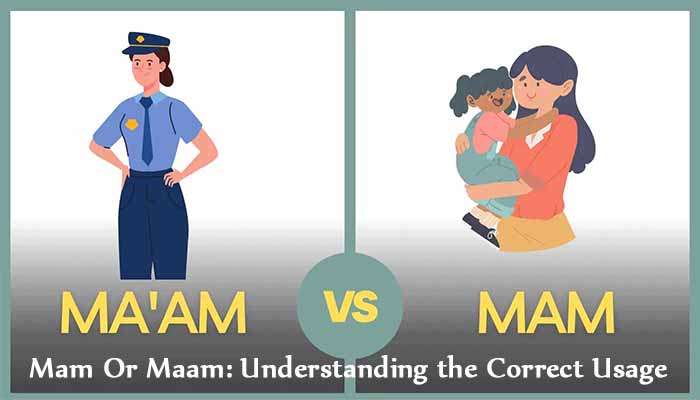
Mam Or Maam: Understanding the Correct Usage
Introduction
Have you ever found yourself questioning the proper way to address someone respectfully when you’re unsure of their gender? In such situations, the terms Mam Or Maam often come to mind. However, there seems to be some confusion about their usage. In this article, we will explore the correct usage of Mam Or Maam and shed light on this common linguistic dilemma.
Main Content
The Difference Between Mam Or Maam
Before diving into the usage, it’s essential to understand the subtle difference between ‘Mam’ and ‘Ma’am’. While both terms share the same purpose of respectfully addressing someone, they actually differ in terms of their origin and preferred usage.
Origins and Etymology
The term ‘Mam’ is derived from the Middle English word “madame,” which was used to address women of high social standing. Over time, the pronunciation evolved, leading to the modern usage of ‘Mam’ or ‘Ma’am’. On the other hand, ‘Ma’am’ is an abbreviation of the word “madam,” which was commonly used to address married women.
When to Use Mam Or Maam
Now that we understand the origins, let’s delve into the situations where ‘Mam’ or ‘Ma’am’ should be used:
1. Formal Situations
In formal settings or professional environments, it is appropriate to use ‘Ma’am’ when addressing female superiors, such as bosses, supervisors, or clients. This demonstrates respect and acknowledges their authority.
2. Respectful Uncertainty
When addressing an individual whose gender you are unsure of, ‘Mam’ can be used as a gender-neutral alternative to ‘Ma’am’. This approach allows you to convey respect without assuming someone’s gender.
3. Cultural Context
It’s important to consider cultural context when deciding between ‘Mam’ or ‘Ma’am’. In some regions or communities, ‘Mam’ may be the more prevalent term, while ‘Ma’am’ could be preferred elsewhere. Awareness of the local norms and traditions can help you choose the most suitable option.
What You Should Avoid
While striving to use ‘Mam’ or ‘Ma’am’ correctly, it’s equally important to be mindful of some common mistakes or pitfalls to avoid:
1. Overuse
Using ‘Mam’ or ‘Ma’am’ too frequently in conversation may come across as forced or overly formal. It is best to use these terms sparingly, reserving them only for appropriate situations where respect and formality are warranted.
2. Misgendering
When addressing someone, especially in professional settings, it’s crucial to avoid assuming their gender. If in doubt, it’s more respectful to use a neutral term like ‘Mam’ instead of potentially misgendering someone using ‘Ma’am’.
3. Inappropriate Usage
Do not use ‘Mam’ or ‘Ma’am’ to address individuals younger than yourself or in casual settings. In these instances, it’s best to use alternative terms like “Miss” or “Ms.” for younger women or simply their name when in an informal context.
“Remember, using ‘Mam’ or ‘Ma’am’ should be done with thoughtfulness and respect. Pay careful attention to the appropriateness of the situation and cultural context.”
Conclusion
Acquiring the correct usage of Mam Or Maam is essential for effective communication and demonstrating respect towards others. By using ‘Ma’am’ in formal situations or to address female superiors, and opting for ‘Mam’ in cases where someone’s gender is unknown, you can navigate uncertain linguistic territories with grace. Be mindful of the context and cultural norms to ensure your usage is appropriate. Let’s embrace inclusive language that acknowledges and respects everyone, regardless of gender identities.


